|
Week ending: 30th April: Balgray Reservoir
(Map)
It was a gloomy weather forecast for Sunday across Central Scotland: clouds, rain, low
temperature, possible thunderstorms. There were reports of birds at Balgray Reservoir (Website),
west of Newton Mearns, so I opted for there rather than the more exposed coast. Once again
John was indisposed so I was on my own. I forewent the usual breakfast in favour of a home
breakfast of cornflakes with sliced bananas and semi-skimmed milk (10/10).
It was raining when I arrived at the Balgraystone car park, so I had a cup of tea until the rain
stopped, before venturing forth along the path that follows the southern side of the Reservoir. I
got off to a fine start with a shot of a Willow Warbler singing and feeding on a willow bush
at the edge of the reservoir. The sound of a reeling Grasshopper Warbler caught my attention but its song was coming
from a inaccessible position well away from the footpath. I scanned the water for birds and
snapped shots of Mallards and Tufted Ducks. A Ring-necked Duck had been reported but I
didn’t see it (I found out later it was tucked away on the north-west side). There were very active
Canada Geese close to the edge near a large gathering of Lesser Black-backed Gulls. I also
spotted a pair of Mute Swans.
| Willow Warbler |
Mallard Duck |
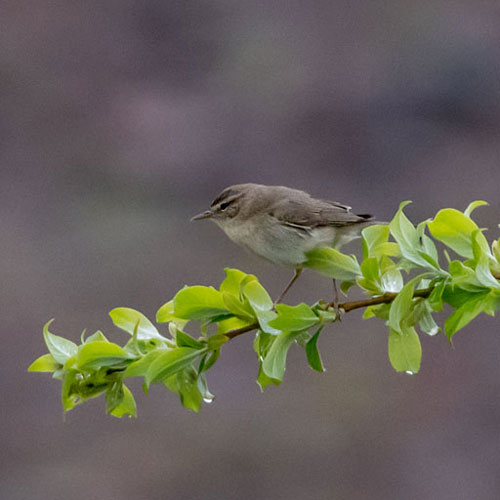 |
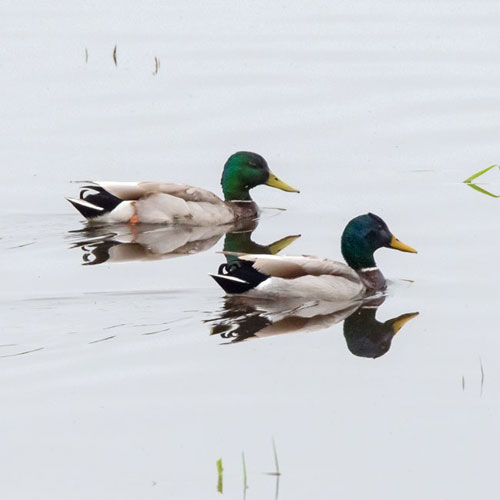 |
| Tufted Duck |
Canada Goose |
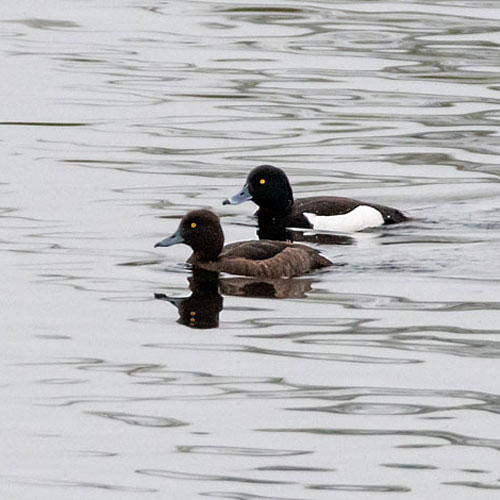 |
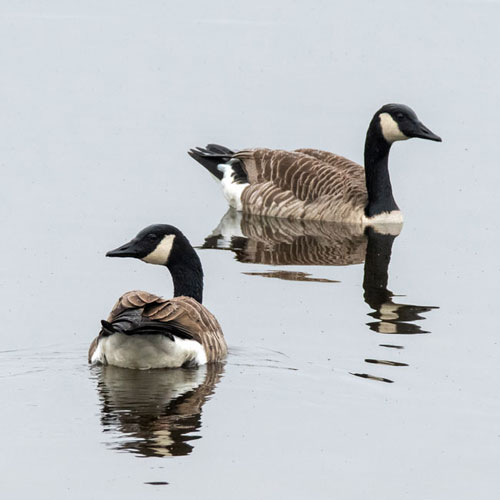 |
| Lesser Black-backed Gull |
Mute Swan |
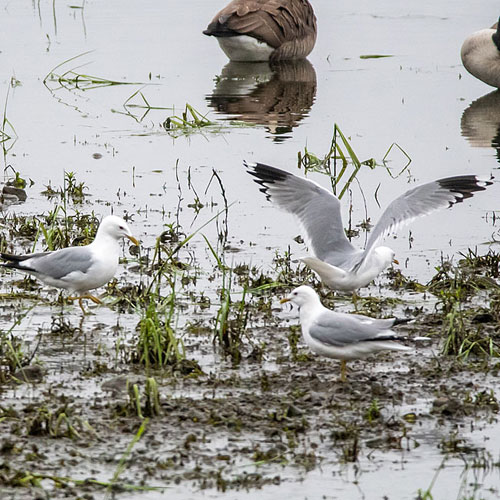 |
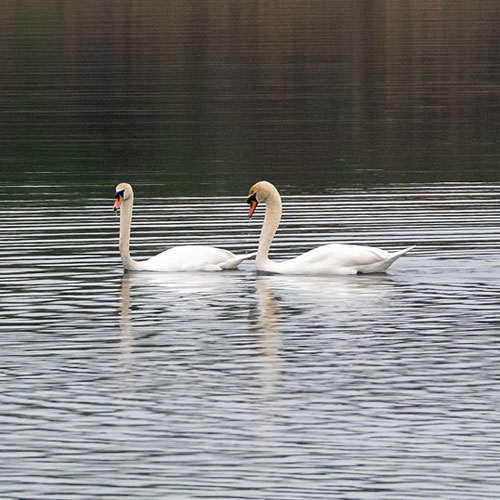 |
The next part of the path was lined on both sides by trees and bushes, with a field to the right. The
strident call of a bold Wren betrayed its position in the hedgerow and allowed me to sneak a nice
shot. I didn’t manage as clear a shot of a female Chaffinch that had just caught a fly. Further along
the path another Willow Warbler was singing atop a small tree as midges swarmed around it. At
the other side of the path a Woodpigeon was tucked away within the branches of a Willow tree.
As I turned my attention to the fields where there was a lone Magpie foraging,
I was approached
by a kind fellow birder who had seen a quartet of Black-tailed Godwits in a neighbouring
field. As he lead me to where he saw them I passed a hedge from which the unmistakable song of
a Sedge Warbler was emanating.
| Wren |
Female Chaffinch |
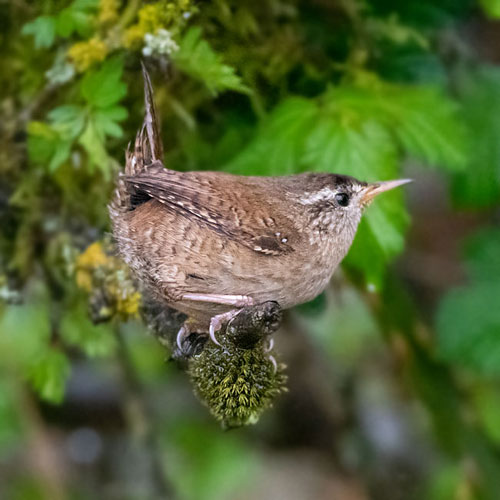 |
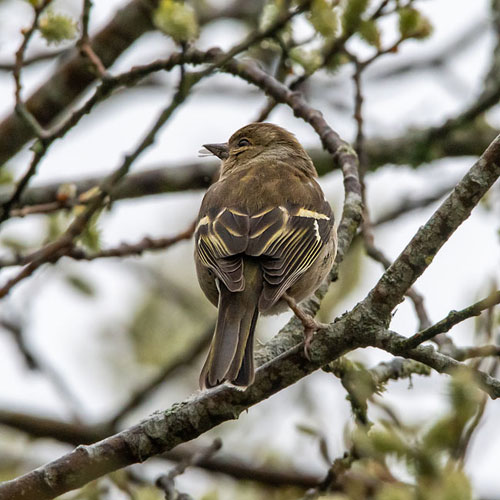 |
| Willow Warbler |
Wood Pigeon |
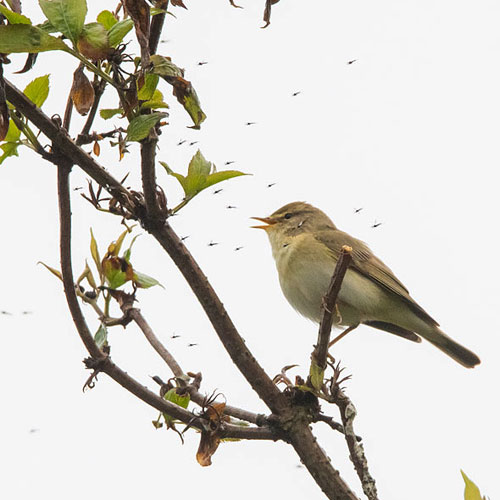 |
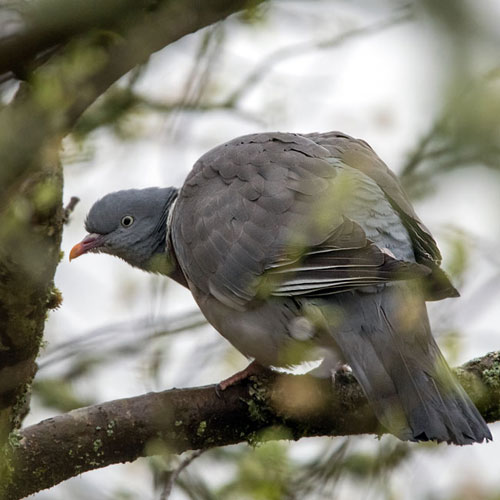 |
| Magpie |
Black-tailed Godwit |
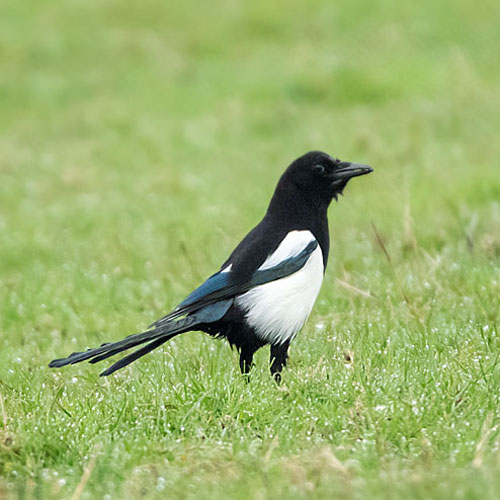 |
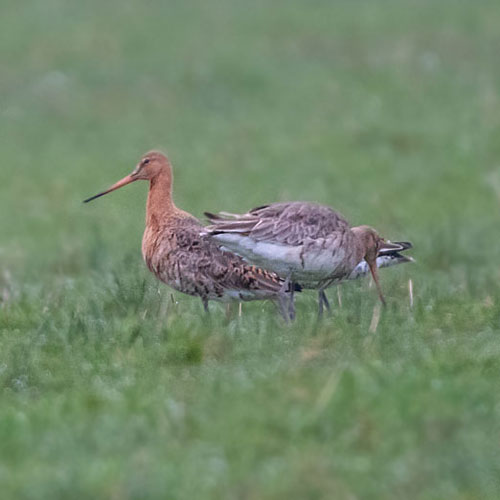 |
Not far from the Godwits there were quite a few Woodpigeons probing the grass for food.
Eventually the path passed close to the water. I had a look for a female Scaup that had
been seen on Saturday and, after a scan of the Tufties I spotted a good candidate. It was quite far
out in poor light but it has a few of the features of that distinguished it from a female Tufted Duck:
no crest, white patch above the beak and light markings on the flank and cheek. There were
Coots searching for pondweed just below my viewpoint. A Mallard flew across my view towards a
Greylag Goose. I was pleased to see a Common Sandpiper flying onto the rocky shore,
although it was soon flushed by a passing dog walker.
Below is the grey view I was faced with. If anything it seemed to be getting greyer.
Just past the wee footbridge over the Brock Burn, a few Domestic Geese seemed to have strayed
from their enclosure into a field across the burn. Also, some Goldfinches were sitting on the fence
of the neighbouring field and that sighting was followed by a couple of pleasing shots of a Great
Tit that landed onto a boundary wall.
Near the end of the path I heard the familiar tweets of a Wagtail coming from the rocky shore. I
believe it was a male White Wagtail . I watched it for a time as it used a boulder as a
launching pad for catching flies. Of course there were perhaps hundreds of other, more expert
catchers of flies over the Reservoir - the Hirudines , e.g. Sand Martins. I had a go at
photographing a few of the many that were darting just above the water. I also got shots of Barn
Swallows, although it was difficult to distinguish them from the Martins given the poor light and
the distance they were from the camera. When I was following the paths of the various hirundines,
I noticed a bird roosting behind a distant line of reeds. From the dark crest, shape and colouring I
believe it is a Great Crested Grebe.
Below is the ever greyer view of the east end of the reservoir showing the tower.
Unfortunately there is no circular route around the reservoir so I simply retraced my steps to return
to the car park. Just before the footbridge I noticed that Marsh Marigolds were in bloom in a
swampy area close to the burn. This was followed by another sighting of a Wren, this time high on
a hedge. Just as I fired the Wren shots, a pair of Greenfinches darted from the hedge and
flew over the bridge onto a low Willow tree. Of course I walked back over the footbridge and
stealthily tracked one of the birds until I had managed a decent capture. However, the fun wasn’t
over. As I reached the hedge where I’d earlier heard a Sedge Warbler I paused for a minute or two
and listened to hear if it was still there. I’m pleased to report that it was and the picture below
proves it.
| Marsh Marigold |
Wren |
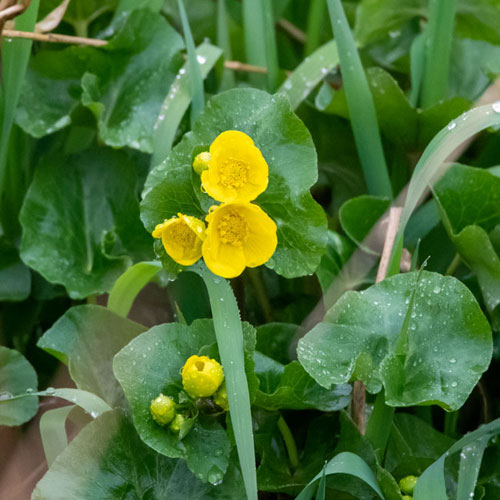 |
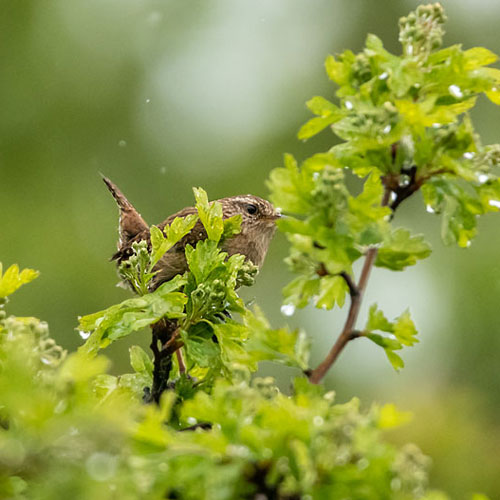 |
| Greenfinch |
Sedge Warbler |
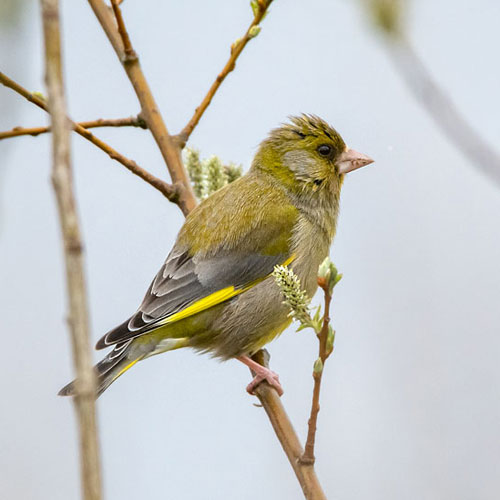 |
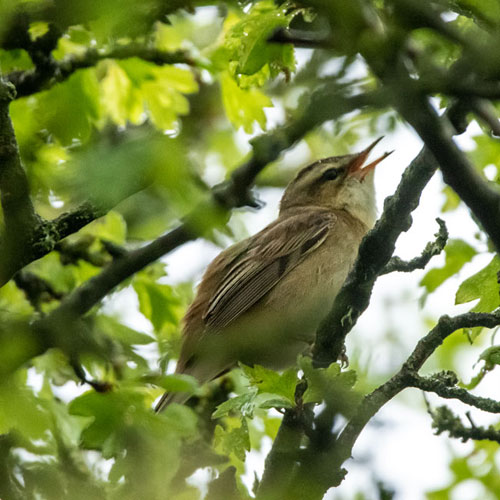 |
By this time I was quite pleased with my collection of pictures but I was getting more and more
damp with the persistent rain. My picture below of the Carrion Crow typifies the largely colourless
scene. I lengthened my stride and beat a hasty retreat to the car, only pausing briefly to
photograph a nearby Woodpigeon, a weather beaten clump of Honesty (Lunaria annua)
and, by the car park, some flowering Gorse.
| Carrion Crow |
Wood Pigeon |
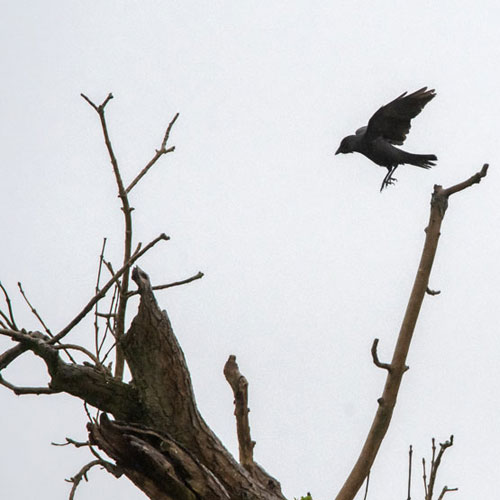 |
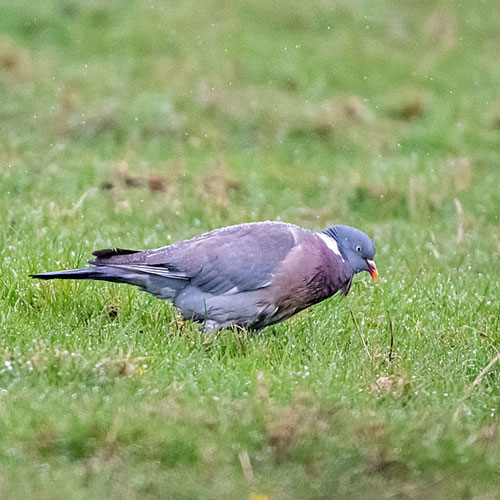 |
| Honesty |
Gorse |
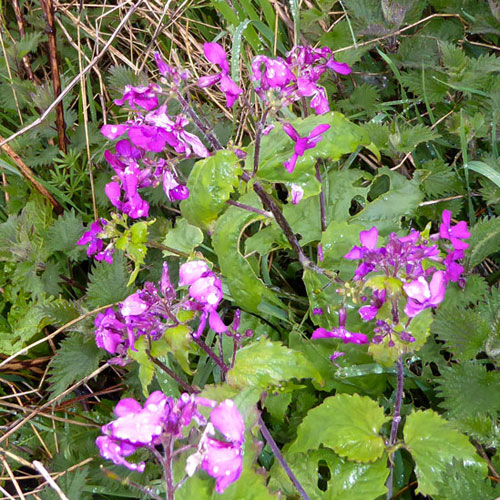 |
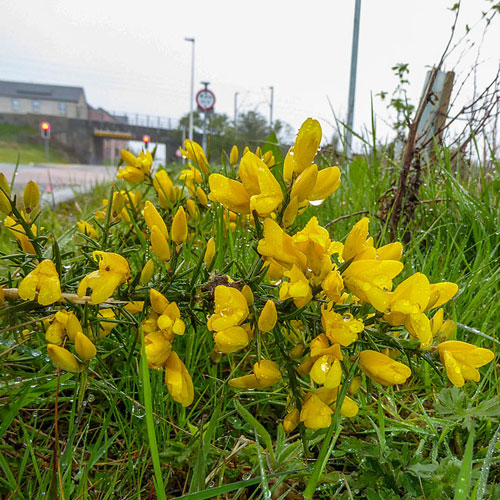 |
I
was quite pessimistic when I set out but as I sat in my car munching
chocolate Hobnobs and sipping warm tea, I pondered my collection of
sightings and was filled with a sense of satisfaction. My favourites
were the Warblers, Godwits, the Scaup and I have a hot-spot for
Greenfinches. Hopefully my waterproof jacket will have dried out for
next week as I’ve just looked at the forecast and I might need it
Week ending: 23rd April 2023: RSPB Baron’s Haugh
This Sunday I visited RSPB Baron’s Haugh, attracted by reports of a rare visitor to Scotland, a
Black-crowned Night Heron, more usually found in continental Europe. Unfortunately John
and his bins were unable to attend so I realised I would have to concentrate harder than usual
throughout the visit. The weather forecast was favourable: dry and occasionally sunny, but cold
for the time of year. To keep me warm I had a roll and sausage and a strong cup of tea in Glasgow
Fort Morrisons (10/10: excellent).
As I started my walk around the Baron’s Haugh reserve there were encouraging messages on the
Clyde SOC WhatsApp group informing its members that the Night Heron had been sighted south
of the Haugh at Merryton and that it was currently flying upstream towards the reserve. Needless
to say, I headed down the Manse Road that leads to the Chestnut Walk, the path to the River
Clyde. Right at the start I came across a pair of Great Spotted Woodpeckers frolicking in
the woods. Soon afterwards I heard the high-pitched calls of Goldcrests moving on conifer
foliage. As I tracked and photographed them, a Nuthatch appeared, feeding on an adjacent
tree.
That great start put me in a very positive state of mind as I paced towards the River Clyde. I
collected snaps of some wildflowers on the way. By far the most ubiquitous were the huge
patches of Few-flowered Leeks. There were beautiful yellow Marsh Marigolds on the marshy
edges of a field beside the Chestnut Walk. At the river I could see no sign of the Night Heron so I
decided to follow the river downstream. By the grassy edges of the footpath I saw dainty Cuckoo
Flowers and a few star-like Greater Stitchwort flowers. Below the hedgerows there were Bluebells
beginning to bloom and also tiny, but gorgeous Dog Violets.
| Few-flowered Leek |
Marsh Marigold |
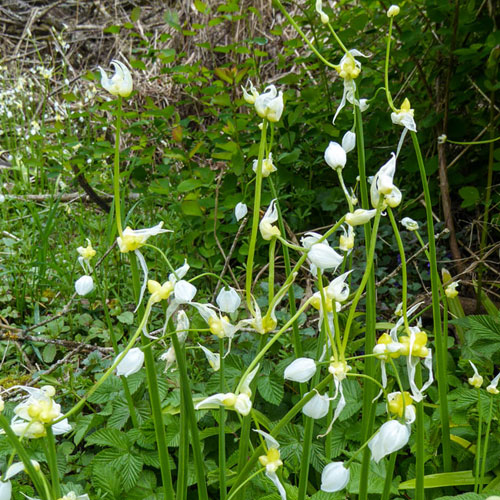 |
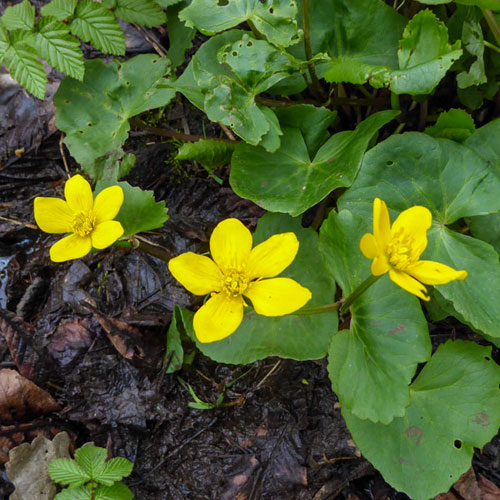 |
| Cuckoo Flower |
Greater Stitchwort |
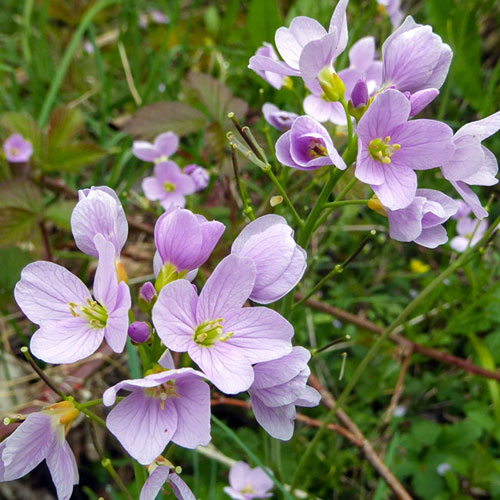 |
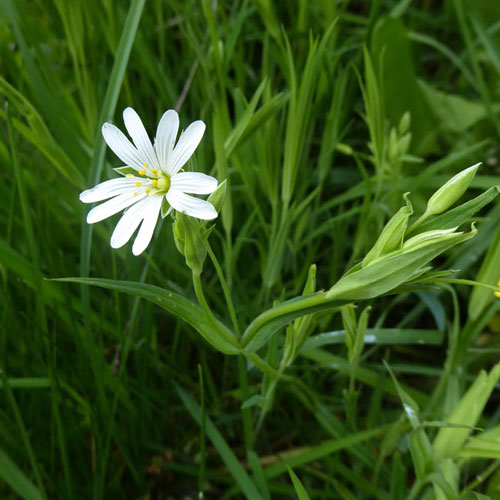 |
| Bluebell |
Dog Violet |
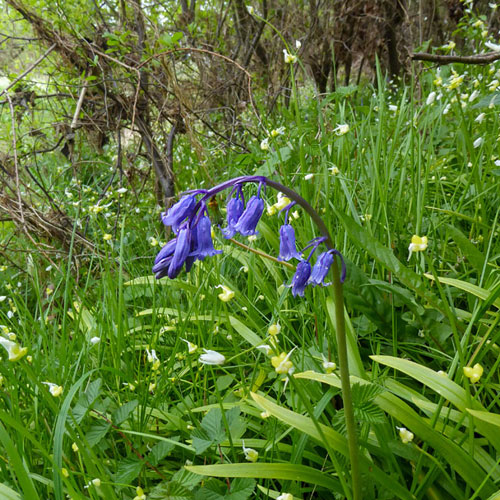 |
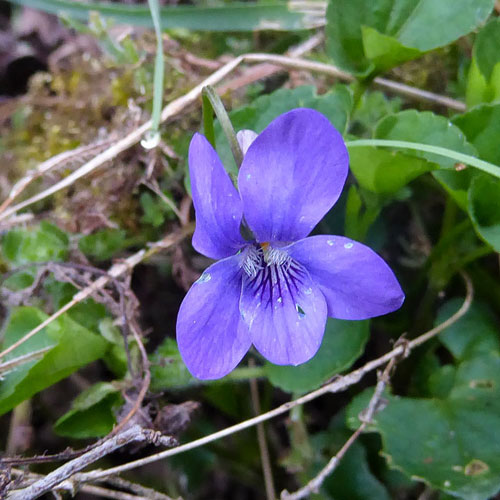 |
I encountered a Chiffchaff that unfortunately eluded the camera, but I was far more
successful in photographing a Willow Warbler close to the Centenary hide. I also caught a
glimpse of a Blackcap as it sang its wild serenade as it hid in the bushes. Less shy were a
pair of Blue Tits that landed in bushes I was passing. Probably the bird with the biggest volume to
size ratio was the Wren I snapped just outside the Centenery hide. It was so immersed in its
powerful singing that it completely disregarded the clicks of my shutter.
| Willow Warbler |
Blackcap |
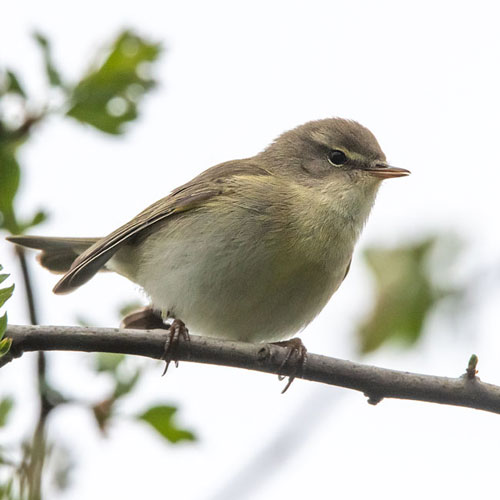 |
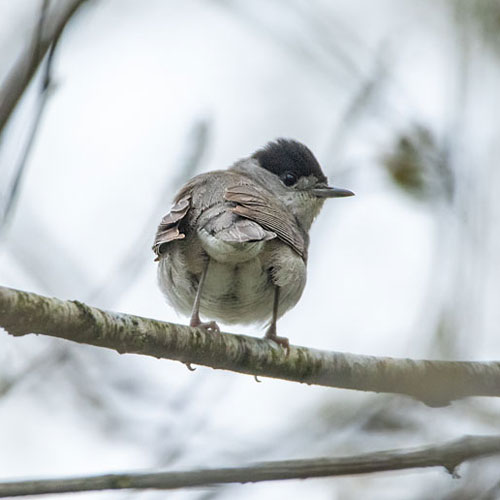 |
| Blue Tit |
Wren |
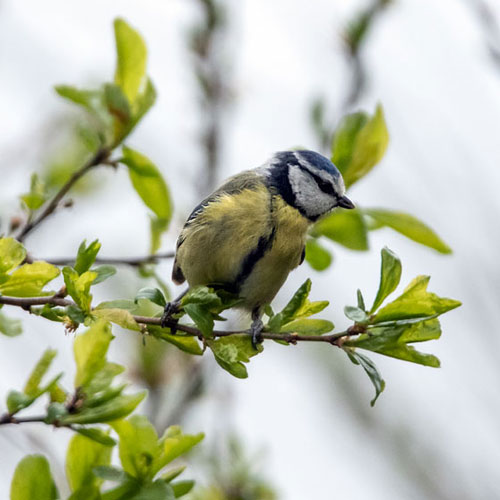 |
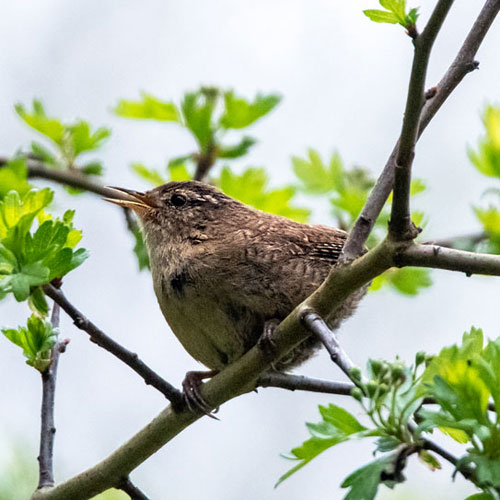 |
I sat by the river for a while hoping to see a passing Night Heron. That didn’t happen but I did see
Mallards and Canada Geese. I also got a good look at a pair of Goosanders as they left the
water to stretch their wings and rest a while on a grassy bank. I pressed on towards the site of the
now demolished Phoenix hide when my eye way caught by a Common Sandpiper dashing
upstream obviously flushed by something or someone. It was a someone, whom I met soon after.
He was keen to show me the pictures he had taken 10 minutes before of a Night Heron near the
site of the old Phoenix hide. I battered on with raised expectations.
Although I was keen to hook up with the Night Heron, I couldn’t resist stopping to photograph
things that took my notice. A pair of Bullfinches were in and around a flowering bush. The
male was eating the flowers. I also paused briefly at Lesser Celandine half-opened due to the dim
light level, and Red Campion. Just before the footpath turned into the stretch beside the River
Clyde where I expected to see the Night Heron, I photographed a Blackbird that was perched
high on a young tree. The light was very poor but I managed a shot of a big Woodpigeon that,
untypically, posed a bit before flying off.
| Female Bullfinch |
Male Bullfinch |
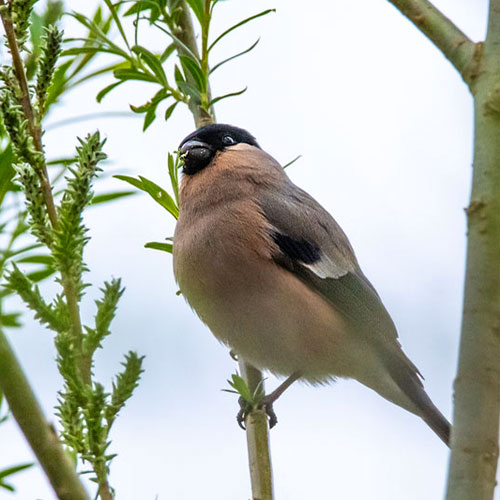 |
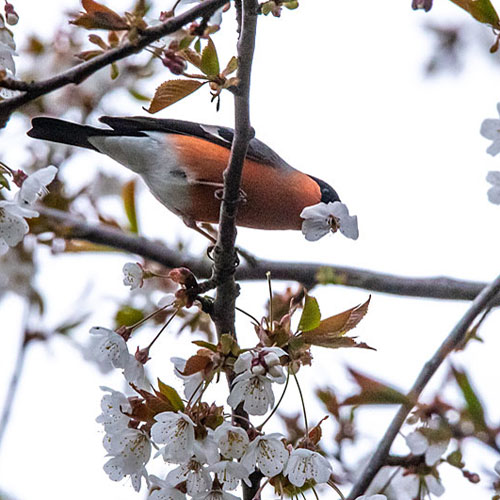 |
| Lesser Celandine |
Red Campion |
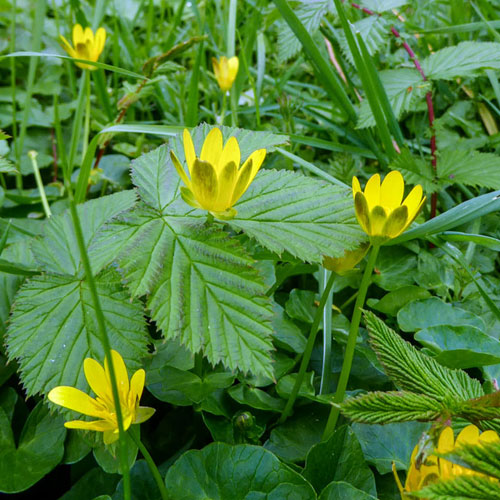 |
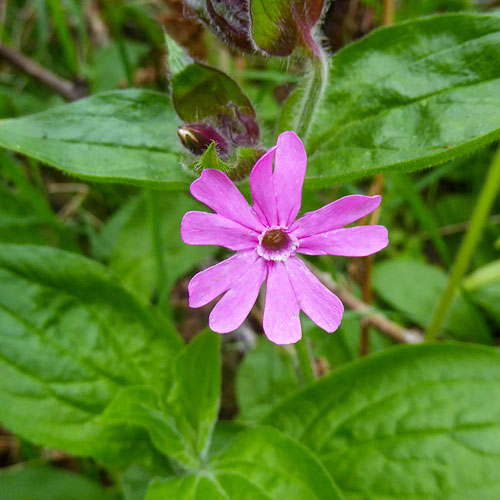 |
| Blackbird |
Wood Pigeon |
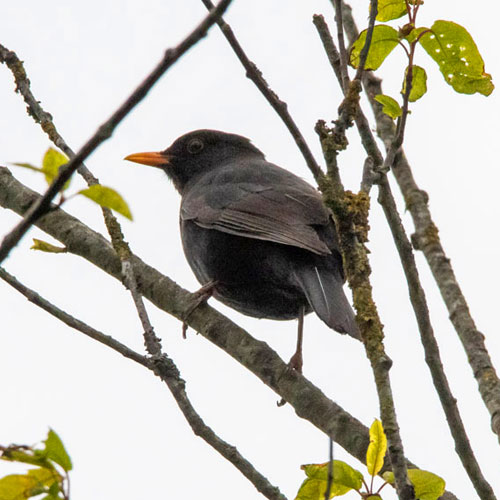 |
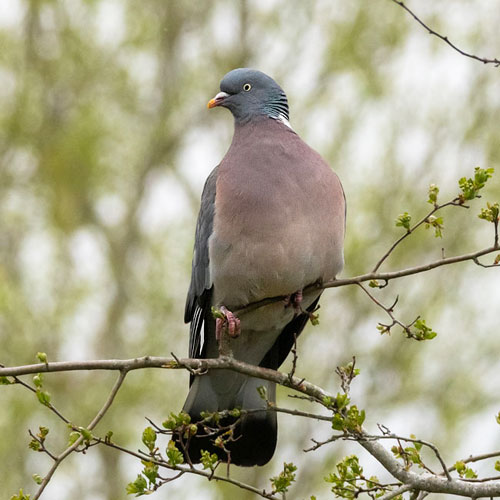 |
There were about a dozen birders along the banks of the river all tooled up with bins, scopes and
cameras, all watching for the re-emergence of the Night Heron. I was told that it was hiding in
shrubbery on the opposite bank. Eventually it appeared at the edge of the river and I got a distant
but fairly decent shot, but I was sure I could do better, so I hung around for a bit. A Grey Heron
passed overhead on its way into the Haugh. However, I got a bit impatient and decided to move
to the Causeway hide to photograph what I could see there. On my way there I got nice captures
of a clump of Daffodils by the river, and of a tuneful Robin perched and singing on a tree at the far
end of the “shortcut” path through the woods.
| Black-crowned Night Heron |
Grey Heron |
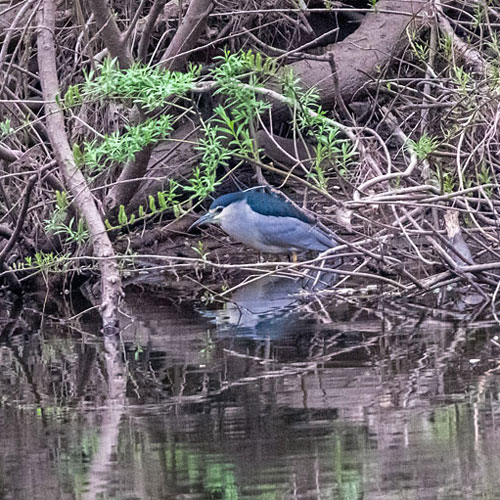 |
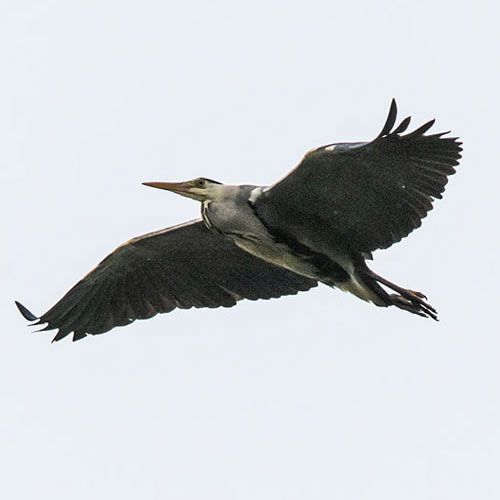 |
| Daffodil |
Robin |
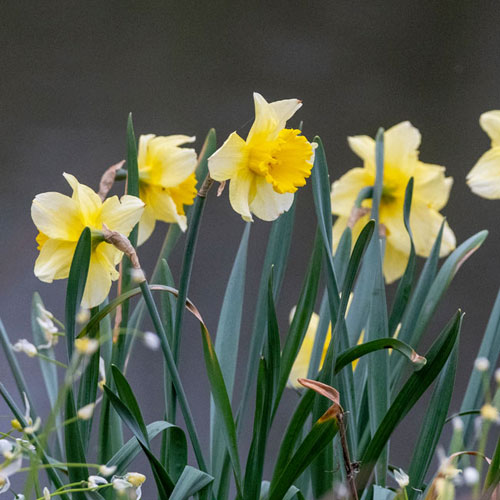 |
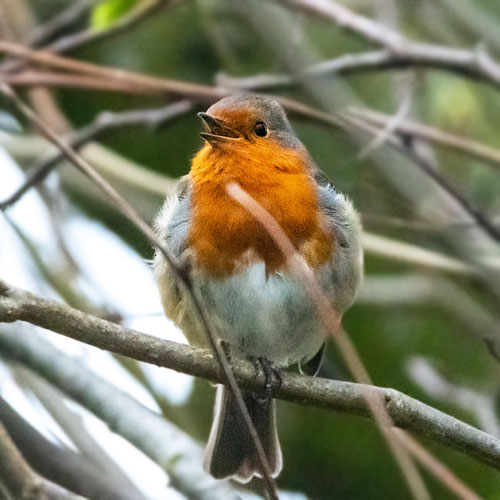 |
At the Causeway hide a large group of restless Lesser Black-backed Gulls were making a lot of
noise at the middle of the Haugh.
To the right of the hide a large Mute Swan was at the edge of the Reed bed preparing a nest. A
pair of Great Crested Grebes were gliding across the very still water some 70m from the
hide. To the left of the hide I could see a Grey Heron prancing along the water’s edge. Two drake
Mallards were moving about the water as if they were tied with invisible string. Maybe they were
competitors in courtship, each not willing to let the other bird of out its sight. I was pleased to see
a pair of Gadwalls feeding on the left, fairly near to the hide.
| Mute Swan |
Great-crested Grebe |
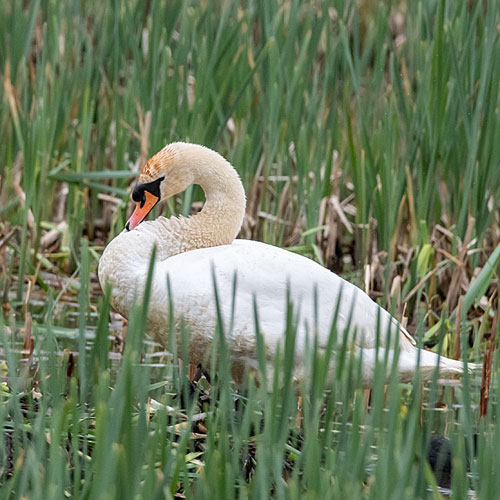 |
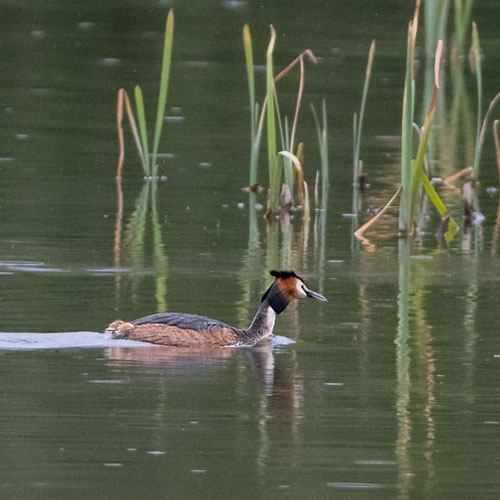 |
| Grey Heron |
Mallard |
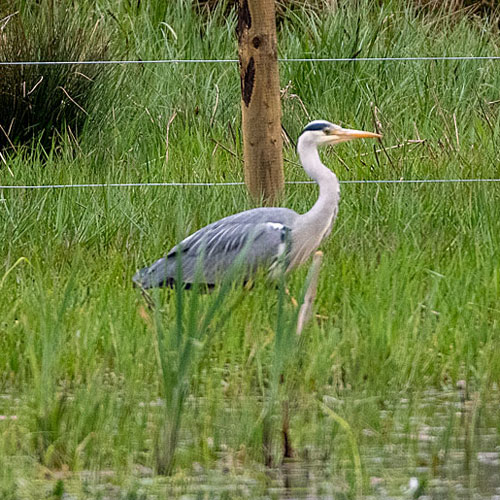 |
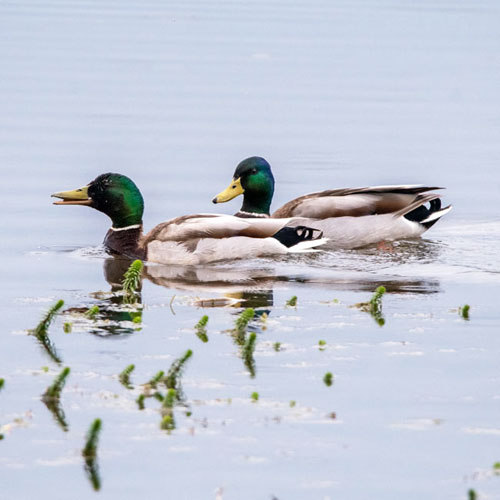 |
| Drake Gadwall |
Female Gadwall |
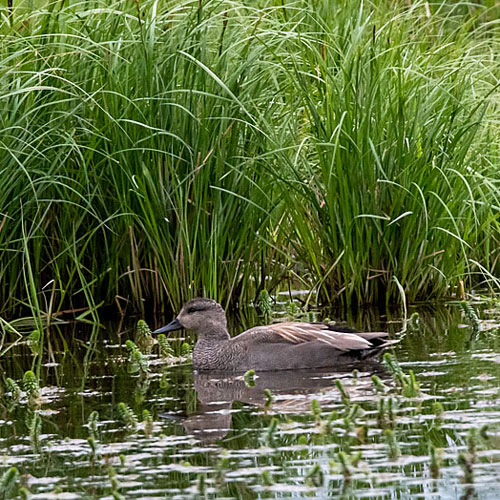 |
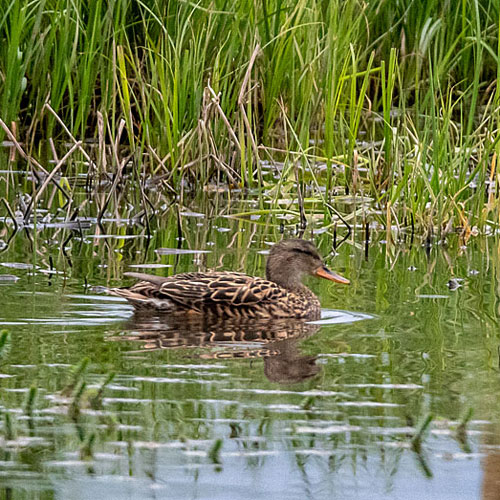 |
Near the Gadwalls, a charming little Coot was nibbling at pondweed ….
…. while back over to the right hand side, a Little Grebe had appeared and was paddling slowly
across the calm surface of the Haugh.
Satisfied that I had captured all I was going to see from the Causeway hide, I decided to return to
the river where I’d seen the Night Heron, hoping for a better look at it. After a wait of about 30
minutes the Night Heron suddenly appeared from behind the bushes and flew onto the top of low
bush. As the pictures below show, it posed well and offered really good views.
Mission accomplished! As I headed back to the car I overheard a birder say, “That was too much
excitement for one day”. I’m not sure I’d totally agree, but I know what he meant. All too often
John and I set off on a Sunday and search in vain for a rare bird, so it’s very satisfying when we
actually manage to photograph it. Also, there are occasions when my visits to Barons Haugh have
been fruitless. As can be witnessed by the variety of shots shown above, I’m glad to report that
this wasn’t one of them. Back at the car I celebrated with a cup of tea and a chocolate hobnob.
Week ending: 15th April 2023: Dalzell Estate, Hogganfield Park LNR, Strathclyde Country Park
There was no Sunday visit this week as I was on holiday. This blog is therefore based on the few
sites I visited throughout the week. Weather-wise the days were a bit chilly with generous sunny
spells.
12th April: Dalzell Estate (Graphic)
I made a very brief visit to this largely wooded area which neighbours RSPB Baron’s Haugh in
Motherwell. I was pleased to see plenty of Grey Squirrel activity. The trees were showing emerging
foliage and there were Great Tits and Blue Tits filled with the joys of Spring. I was photographing a
beautiful Spring flower, the Wood Anemone, when a wee Wood Mouse dashed across the
path and hid, not very well, in a tuft of grass. At that point, my wife summoned me by text - end of
visit.
13th April: Hogganfield Park LNR
On the next day I attempted to get parked at Hogganfield Park LNR. I had tried
unsuccessfully on three previous attempts but on Wednesday I arrived just as a car was leaving.
I’m glad I managed it because I was able to witness one of the UK’s finest natural wonders, the
courtship “dance” of the Great Crested Grebe. First the male and female meet and greet
each other with much twisting of their heads. Next they dive below the water and emerge
seconds later carrying pondweed in their beaks. They then rush together at speed and stand
together apparently presenting the weed to their mates. This usually continues for a few minutes
before they assume their usual positions, once again with much twisting of the heads.
Gallery
I wandered around the loch on the look-out for anything of interest. A Coot caught my attention as
it hauled some dried vegetation across the water towards its nesting site.
There were Cowslips blooming close to the car park and further round, blue Siberian Squill
blooms were very much in evidence. Coots and Moorhens were working the edges of the water.
To the east of the loch, by a small pond, I heard my first Willow Warbler of the year. It had
travelled there from as far south as Northern Africa. After a short search I was lucky enough to
manage a pleasing shot as it hopped across the leafless branches of a small Willow bush. On my way
back to the car I came across Marsh Marigolds lining the banks of a stream feeding into the loch.
| Cowslip |
Siberian Squill |
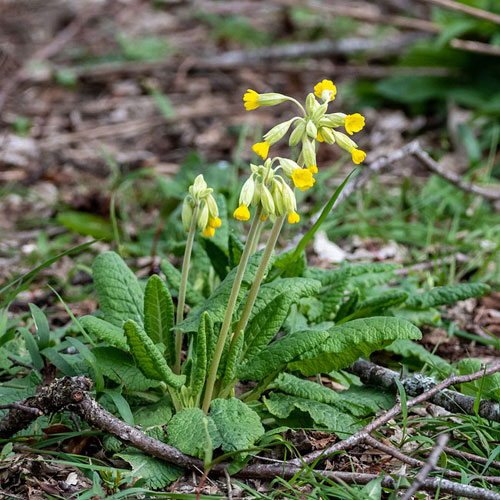 |
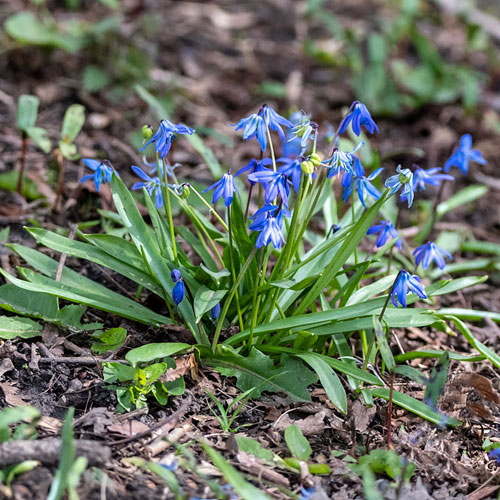 |
| Coot |
Moorhen |
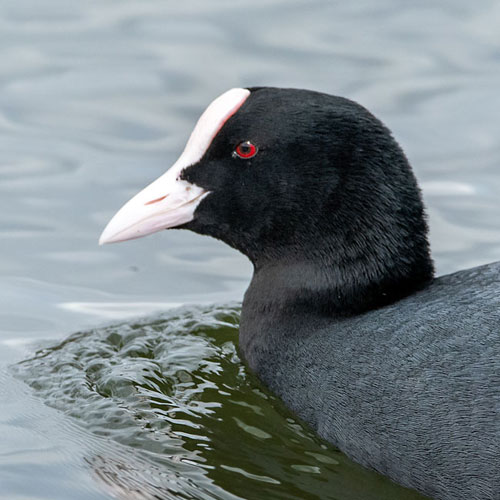 |
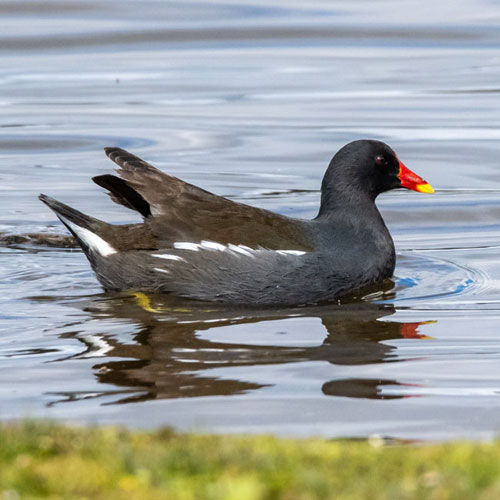 |
| Willow Warbler |
Marsh Marigold |
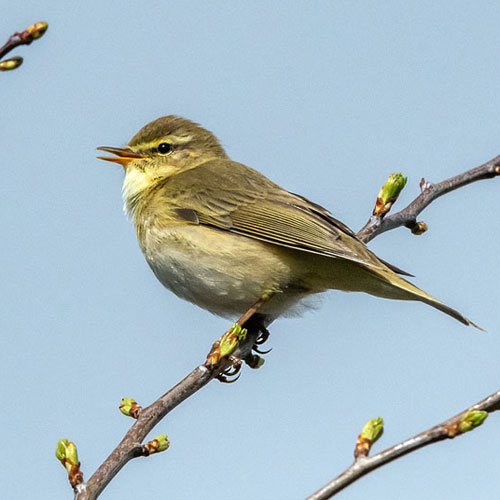 |
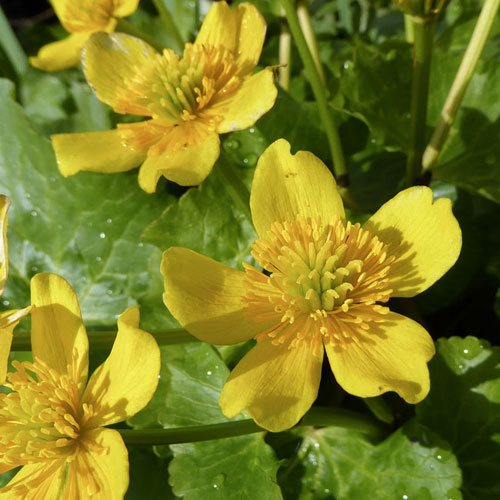 |
15th April: Strathclyde County Park
It was Saturday when the Sun drew me out to Strathclyde Park. I parked near M&D’s Theme Park
and since the paths around loch were mobbed with walkers I decided to explore the woods and
fields east of M&Ds. I got off to a good start when I encountered a female Chaffinch hunting flies
under the eaves of a toilet block. On neighbouring trees there was a Dunnock busy on tree
branches I passed under. On the grassy verges of the path behind M&D’s there were wildflowers
in bloom such as Daisies, Lesser Celandine and the wonderfully-named Opposite-leaved Golden
Saxifrage.
A side path led me to what the locals call “the bridge to nowhere” because it is a relatively large
brick construction that seems out of place in the dense woodland. It was there that I found the
aptly-named Scarlet Elf Cup fungus. I also found a tiny beauty of a flower called a Dog Violet , meaning “inferior violet” because it is an unscented violet. Another “inferior” flower in that
area was Dog Mercury a much less attractive flower than others in the Mercury family.
Watching me all the while as I captured images of the flowers was an inquisitive Robin.
| Scarlet Elf Cup |
Dog Violet |
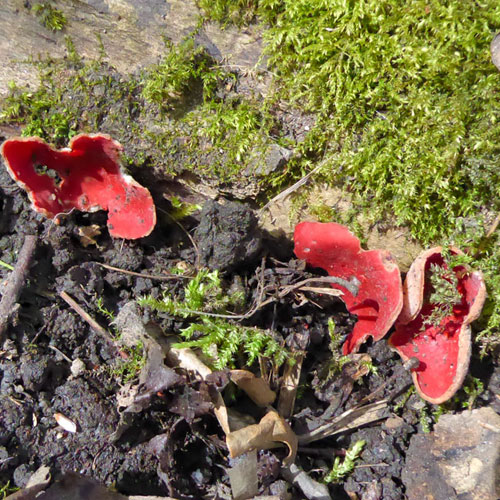 |
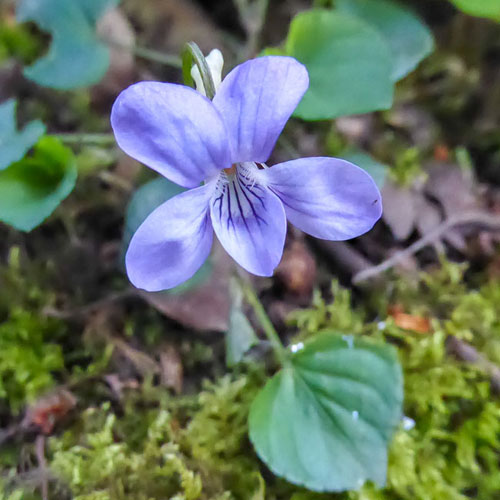 |
| Dog Mercury |
Robin |
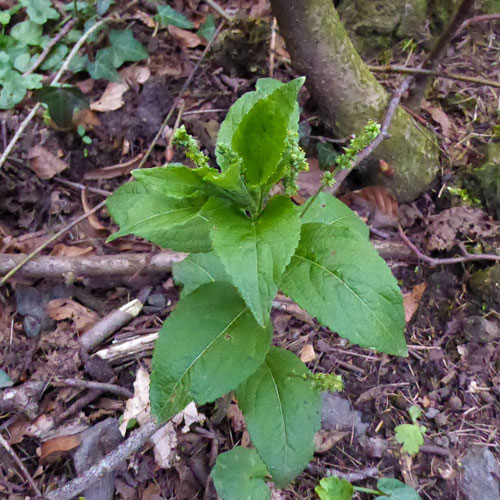 |
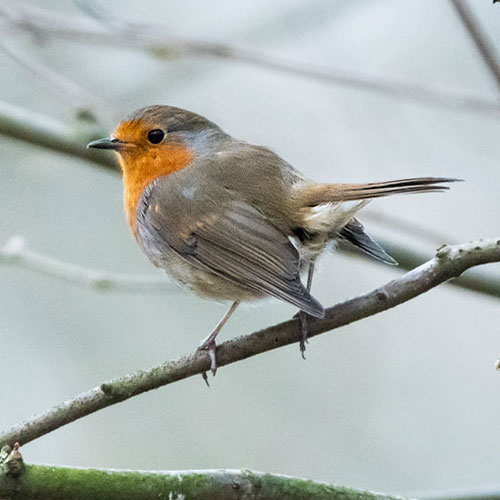 |
After crossing the bridge I moved along an old road that is lined with old tall trees. It was there
that I watched a very busy female Blackbird probing the short grass and occasionally finding a
worm. Further along the road I came to a pile of large metal tubes which belong to the fairground.
I was surprised to see another female Blackbird sitting on the nest she had built inside one of the
tubes. Eventually I came to a vast sloping field with Roe Deer grazing about 200m away in the
centre of the field. However they soon dispersed when a woman decided to enter the field and let
her big Alsatian off the lead. A pretty Blue Tit distracted me from that annoyance.
I also heard the twittering of Goldfinches in the bushes and managed a quick shot of one. As I
passed a Caravan Park I heard the piercing song of a Wren, then snapped it as it hopped about a
low bush. Next the “chiff-chaff-chiff-chaff” birdsong guided me to my next capture, which you’ll
not be surprised to learn was a Chiffchaff, another visitor from the south. I next decided to
have a look at the north end of Strathclyde Loch where birds often gather, but there must have
been boat races starting there because it was birdless, apart from a solitary Magpie and…
| Goldfinch |
Wren |
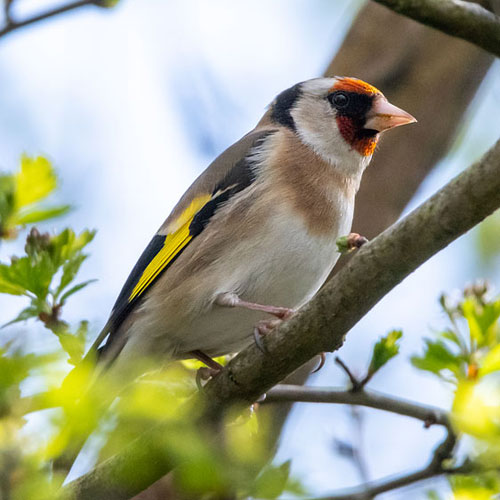 |
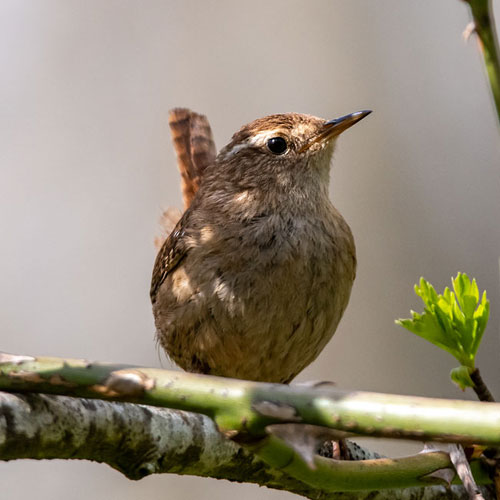 |
| Chiffchaff |
Magpie |
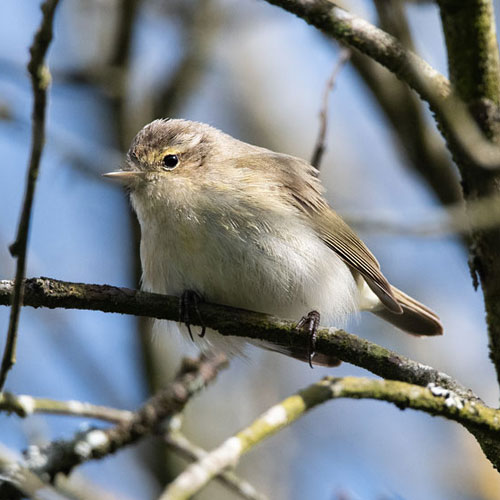 |
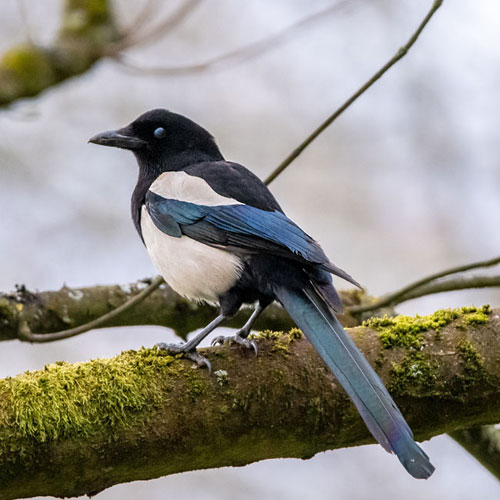 |
… a solitary Moorhen in the moat that surrounds the starting area.
I returned to the car park by walking along the trees that line the park road at M&Ds. I managed a
shot of a male Chaffinch as it sang above me. My final shot of the week was of a Peacock
butterfly sunning itself in the grass below the trees.
| Chaffinch |
Peacock Butterfly |
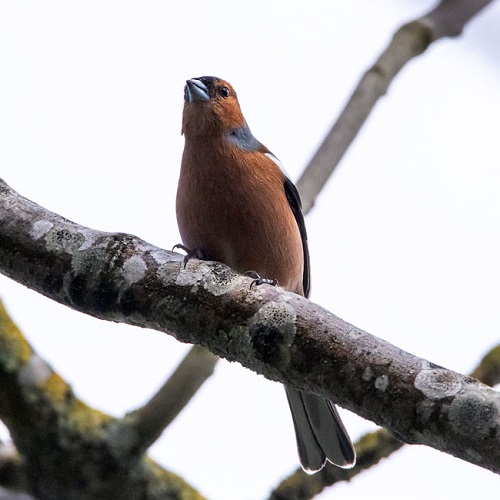 |
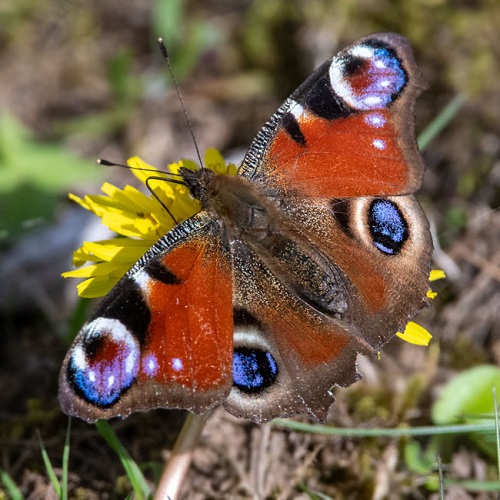 |
Back at the car I congratulated myself for a week of sightings with a cup of tea and a couple of
chocolate hobnobs. My favourites have to be the Great Crested Grebes and the summer visitors,
the Chiffchaff and Willow Warbler. There were more and more flowers on show and I look forward
to photographing them and insects they will attract.
Week ending: 9th April 2023 : Skateraw and Dunbar Harbour
This week we headed for Skateraw, the main reasons being that a) we hadn’t visited there
in 23 weeks, and b) there was a huge bank of cloud and rain creeping in from the west, so East
Lothian would stay sunny longer. Our customary breakfast at Dalkeith Morrisons was wonderful
(10/10: super quick service, food delicious and warm), so well done them.
On arrival we were greeted with beautiful sunshine but the breeze was rather chilly. We found the
tide was very low as can be seen from the view below.
The nearest bird we could photograph was a Curlew walking the water’s edge some 150m from
our viewpoint near the old limekilns. As we walked up the path towards Torness power station I
managed a few shots of a Roe Buck fleeing from passing walkers, but apart from these we saw
no other animals or birds (although we did hear a pheasant). Along the path there were many
blooming Dandelions, some with feeding insects, such as the Yellow Dung Fly below. John
also discovered Siberian Squill and Primrose, and I also photographed Oxford Ragwort which was hard to miss growing on the wall that runs along the path.
| Curlew |
Roe Deer |
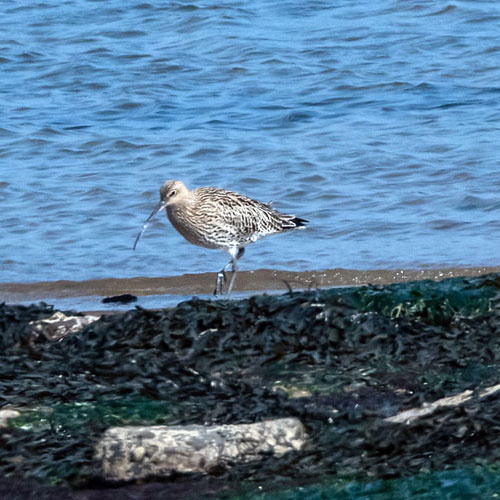 |
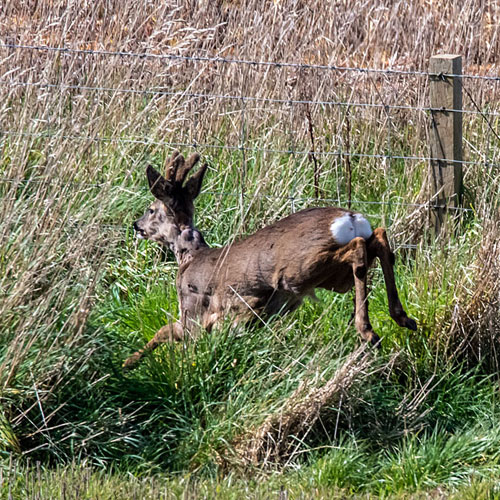 |
| Yellow Dung Fly |
Siberian Squill |
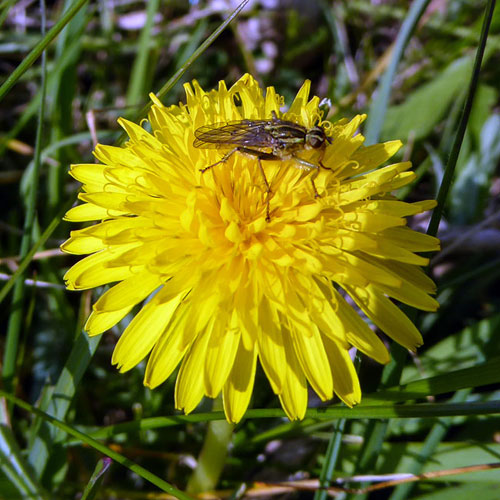 |
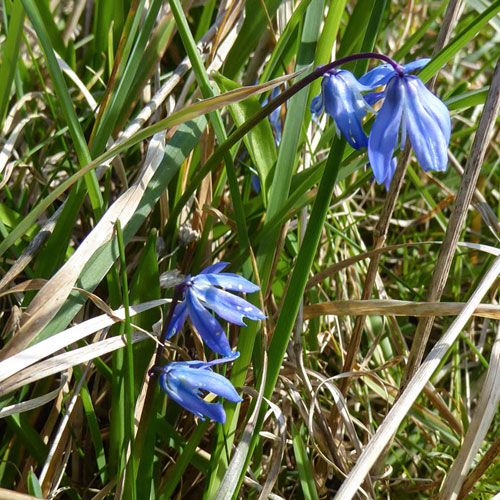 |
| Primrose |
Oxford Ragwort |
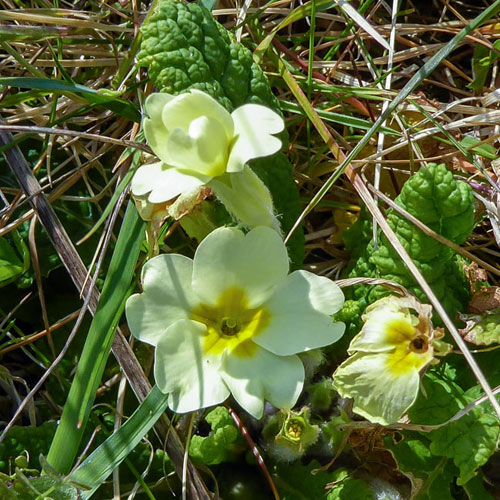 |
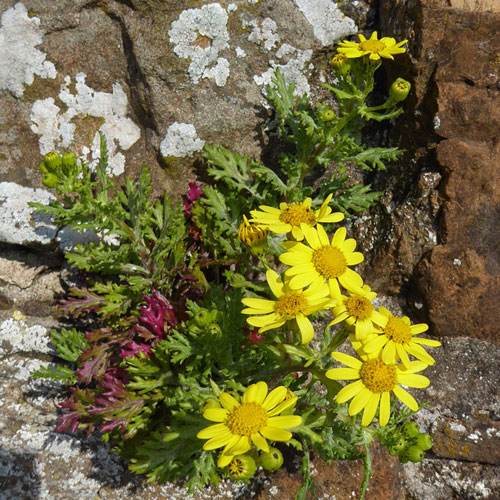 |
We next returned to the car park and walked past the bungalow as we headed for Chapel Point.
We watched a Skylark descend, singing, into the field adjacent to the bungalow. It eventually took
off again to resume its incessant melody. We next came across another bird, a Meadow Pipit, with a similar idea, although it’s ascents and descents were much more brief. While
watching the pipit I noticed a Reed Bunting perched on a leafless bush. At the Point, the view
westwards was dominated by the Barns Ness Lighthouse and the Bass Rock (just visible behind
the lighthouse).
John scanned the shore and seascape for a time and forewarned me of incoming birds such as
“squadrons” of Gannets heading to and from their nesting grounds on the Bass Rock. He also
alerted me to the movements along the shore of some courting Red-breasted Mergansers. He
also spotted (he was working well!) a distant Shelduck, although we did manage much better
pictures of a pair we saw on Skateraw beach when we returned to the car.
We relocated to Dunbar Harbour, where the Sun was still making frequent appearances as the
clouds built from the west. I was pleased to hear the sound of Kittiwakes calling from their nests
on the walls of the ruin of Dunbar Castle.
Kittiwakes were coming and going on and off of their nests, although I couldn’t see any
sign of chicks. Herring Gulls were also very active around the Castle.
We strolled along the harbour’s edge watching a group of beautiful Eider that were diving
for shellfish beside the docked fishing boats. A long-haired tabby cat was wandering about the
stacks of lobster creels, no doubt on the lookout for Sparrows or discarded scraps of fish.
I was keen to get a look at the Shag nesting colony on the rocky crags beyond the sea wall at the
other side of the harbour. On our way round I snapped some shots of Common Field Speedwell that were flowering in raised bed flower boxes that decorated the harbour. I spent some
time watching and photographing the very active Shags as they flew in an out of the colony,
screaming, quarrelling, scrapping for spaces and building and maintaining their nests.
| Common Field Speedwell |
Shag... |
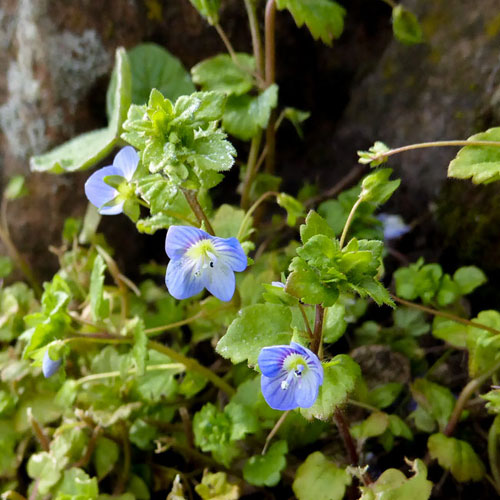 |
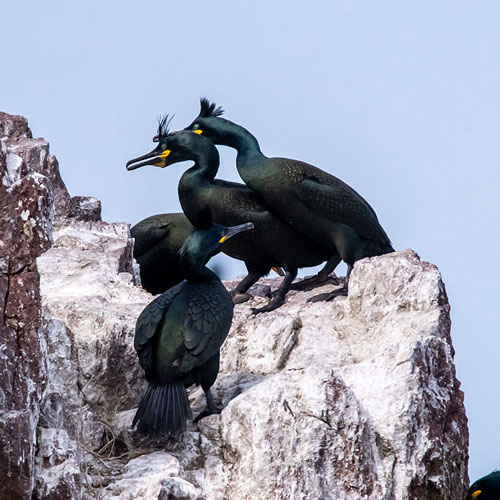 |
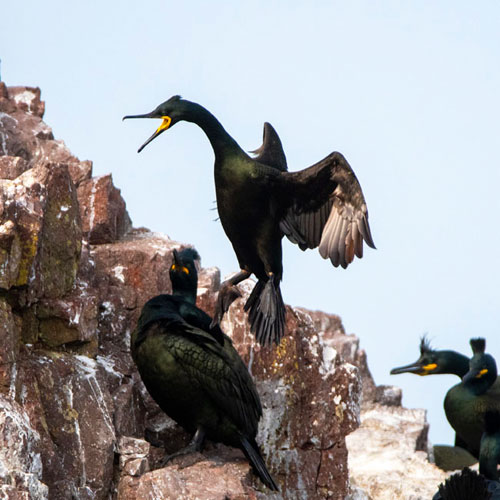 |
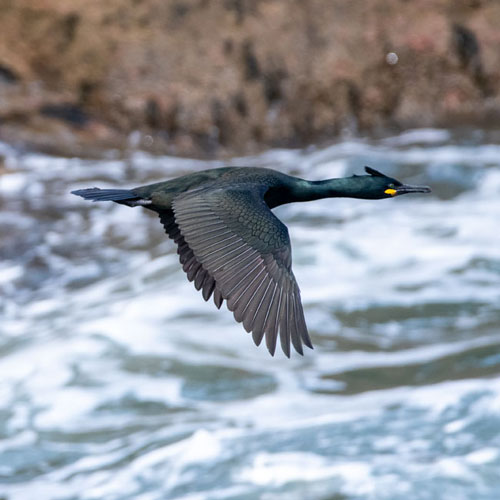 |
John pointed out an Oystercatcher and Turnstone that were foraging on the rocky islands near the
colony. I also observed the Herring Gulls that shared the rocks with the Shags.
| Oystercatcher |
Turnstone |
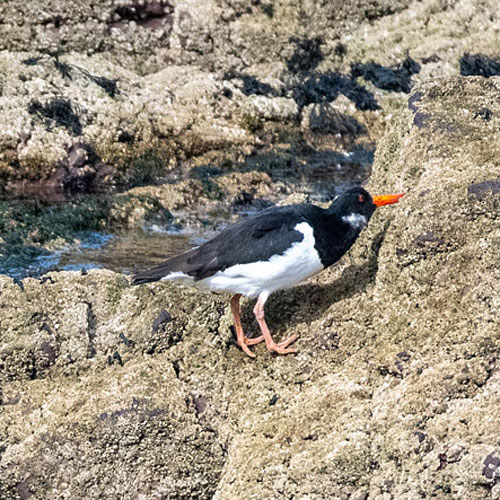 |
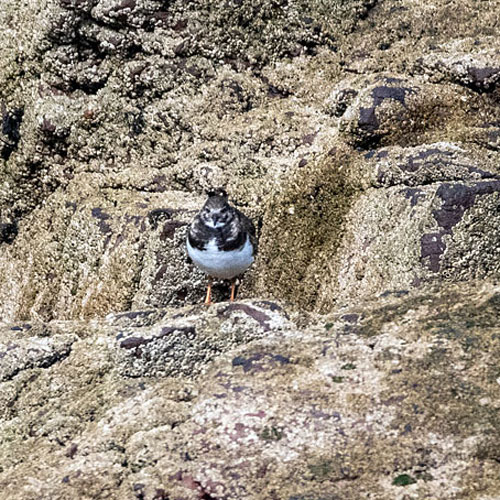 |
| Herring Gull |
3rd Cycle Herring Gull |
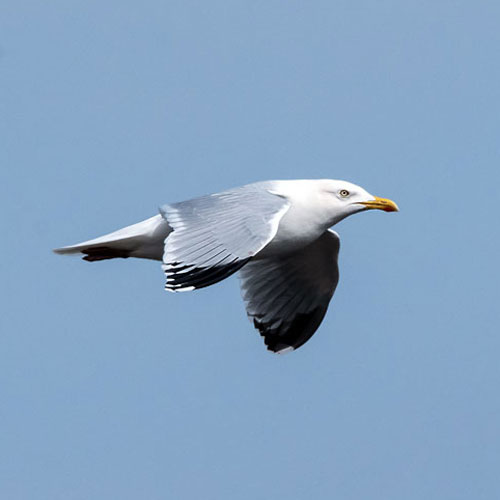 |
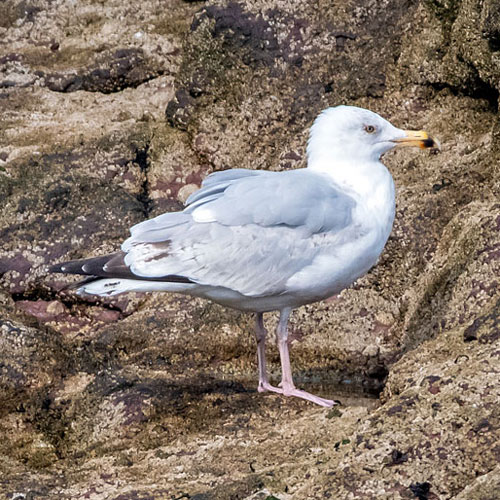 |
There were several patches of Common Scurvygrass at the base of the sea wall by the mouth of
the harbour. I always like to stand there to see if I can spot Fulmars, the so-called “masters
of the wind”. On Sunday though I was surprised to find them nesting on the castle walls beside
the Kittiwakes. We will watch with interest if they manage to produce young. John drew my
attention to the plight of female Eider that, at one point, was surrounded by about ten drake
suitors. By the time she had navigated her way into the harbour, several drakes had given up the
chase but the remaining trio continued their pursuit. An immature drake followed on possibly
taking notes for his future courtship efforts. The final shot of the trip was initiated by John. He
spotted a Rock Pipit flying from the castle, over the Eider and landing conveniently onto the edge
of the quay, only a few metres from where we were standing. There it posed until I had fired
several shots, ending up with a pleasing picture.
The weather had stayed fairly bright throughout the trip and although we were initially
disappointed that we could manage only long shots of birds due to the low tide at Skateraw, we
ended the day with some lovely near shots of Eider, Shags, Kittiwakes and Fulmars. Strawberry
tarts and tea ended the day and we drove home satisfied with our observations. Maybe next week
though we might get a warmer sea breeze
Week ending: 2nd April 2023: Port Seton to Aberlady
News of a drake King Eider sighted off Port Seton harbour drew us east this week, which
was just as well since cloudy weather was predicted in the west. Again, we made a quick pitstop
in Dalkeith Morrisons for our usual small breakfasts (6/10: OK but marked down for slowest ever
service and cold items - and tiny plates).
At Port Seton we saw plenty of Common Eider offshore and a few were courting around
the harbour. Sadly though there was no sign of the King Eider.
There was no sign of the Sun. Early morning mist was clearing, but only very slowly. Despite the
poor light I did manage shots of some “usual suspects”: Carrion Crow, a passing Cormorant, a
busy Turnstone and, as we moved around the harbour, a Herring Gull perched on a fishing boat.
| Carrion Crow |
Cormorant |
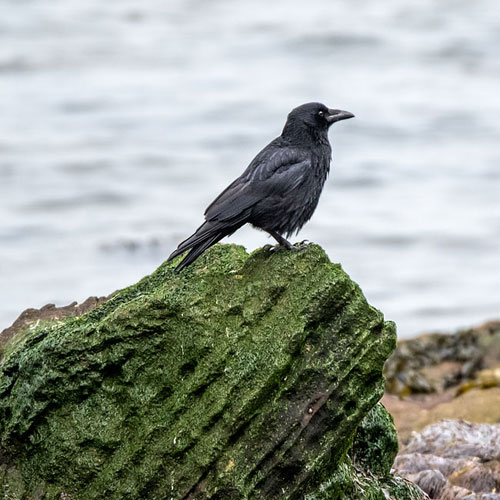 |
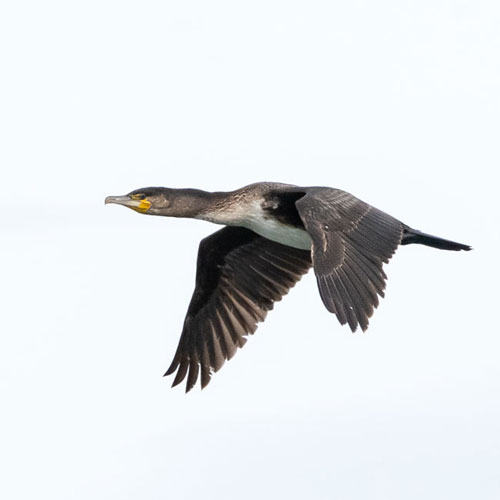 |
| Turnstone |
Herring Gull |
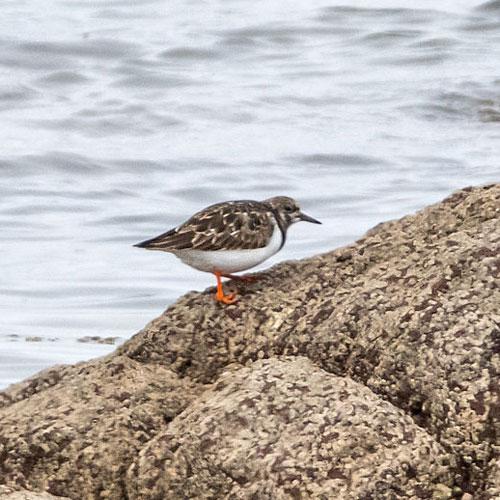 |
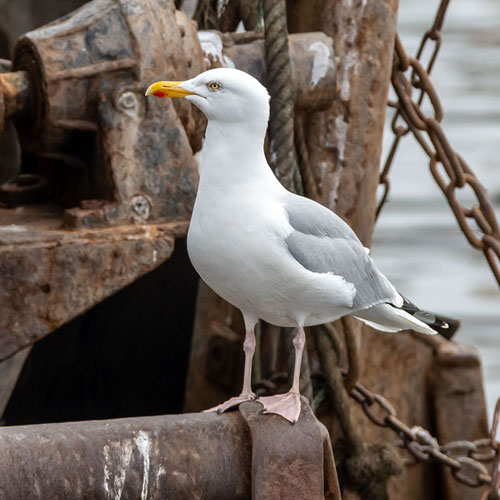 |
Carrion Crows too were poking about the decks of the fishing boats, no doubt looking for scraps
of fish. We were watched by a Pied Wagtail that was scurrying around the top of the high sea wall.
I noticed some Danish Scurvygrass and Common Chickweed at the foot of the wall. Their flowers were
coming into bloom - a welcome sign that Spring has sprung.
| Carrion Crow |
Pied Wagtail |
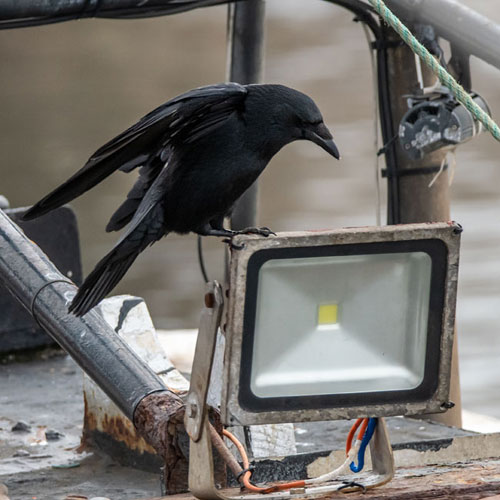 |
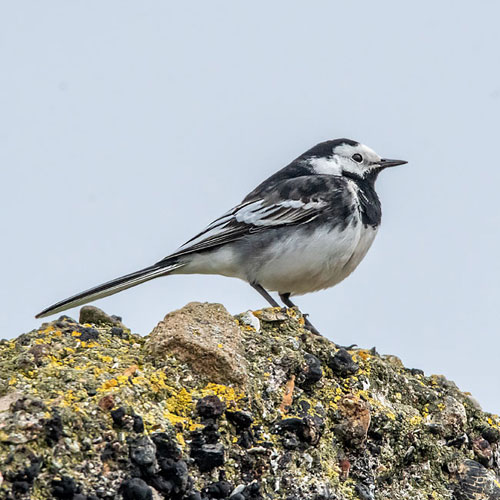 |
| Danish Scurvygrass |
Common Chickweed |
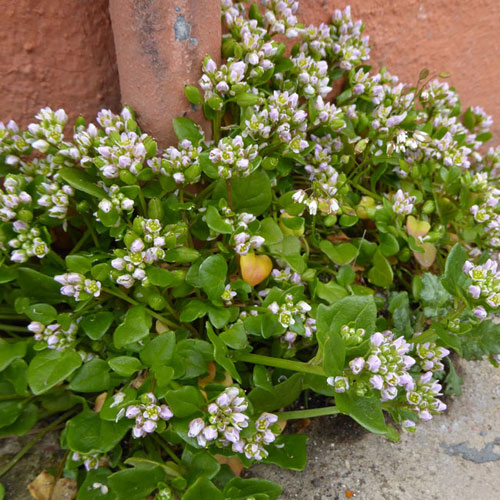 |
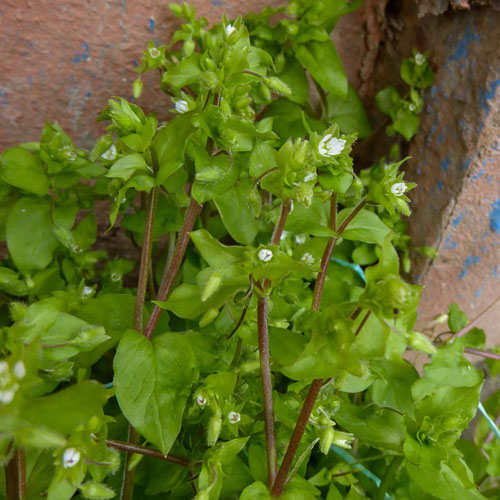 |
We moved a few hundred metres to the east to Seton Burn. There we found more Herring Gulls
and Common Eider. There was a large presence of pretty Wigeon dabbling in the shallows. I got a
shot of a Woodpigeon bathing close to ducks. There was a pair of Curlews foraging on rocks to
the west of the burn.
| Herring Gull |
Eider |
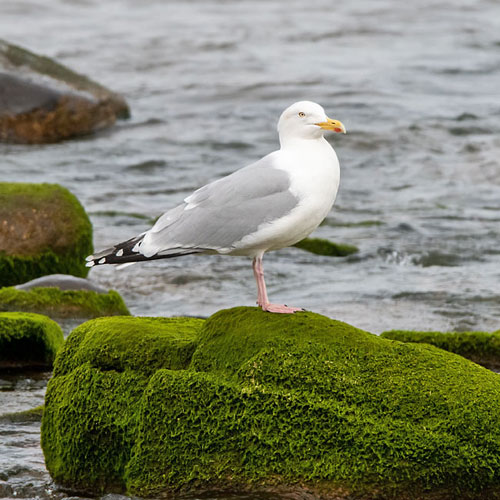 |
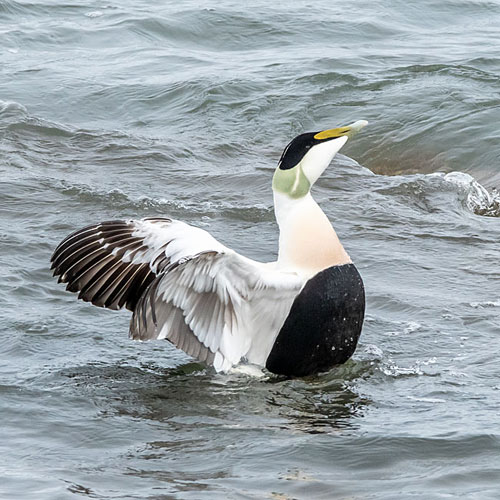 |
| Wigeon... |
|
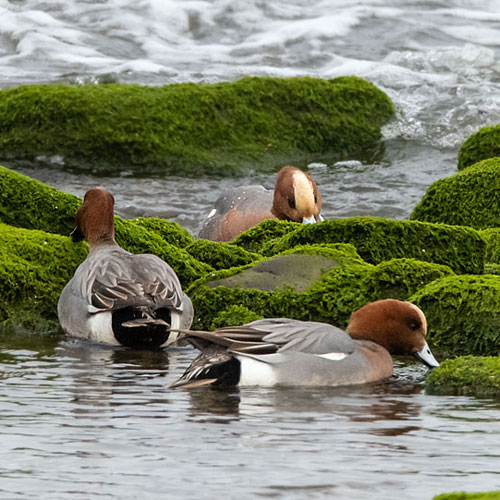 |
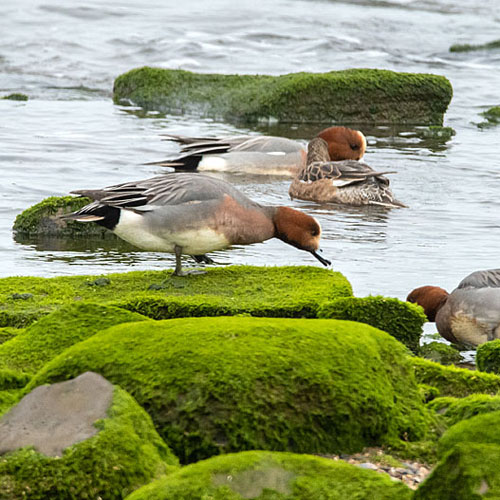 |
| Wood Pigeon |
Curlew |
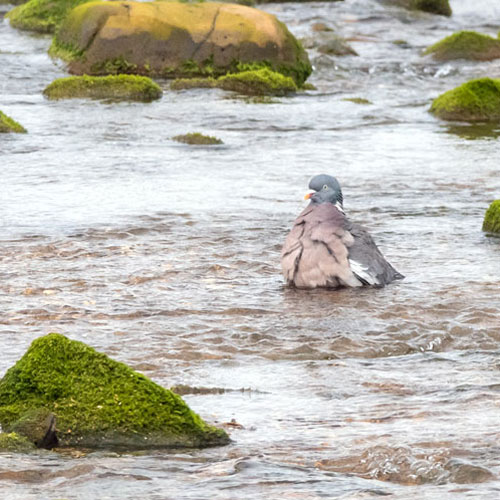 |
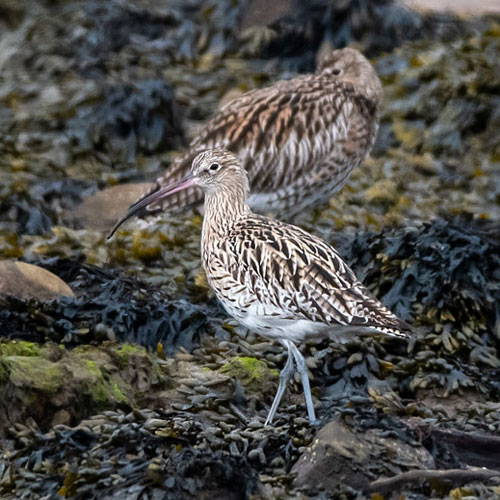 |
Having failed to see the King Eider we drove a couple of miles further east to Longniddry Bents (Map).
There we saw no birds but plenty of people enjoying the sea shore. I did photograph more wild
flowers blooming through long grass: a big clump of attractive garden Daffodils, a single Ground
Ivy plant, Coltsfoot and Lesser Celandine.
| Daffodil |
Ground Ivy |
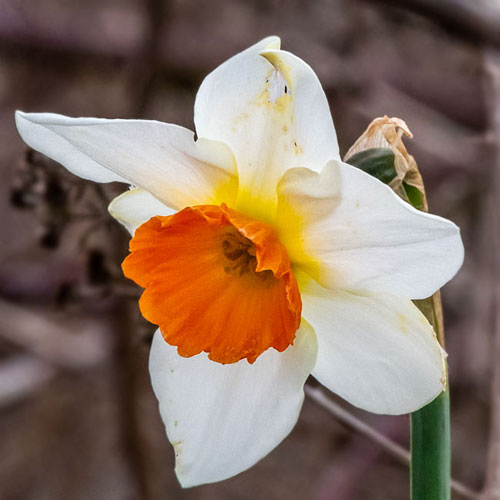 |
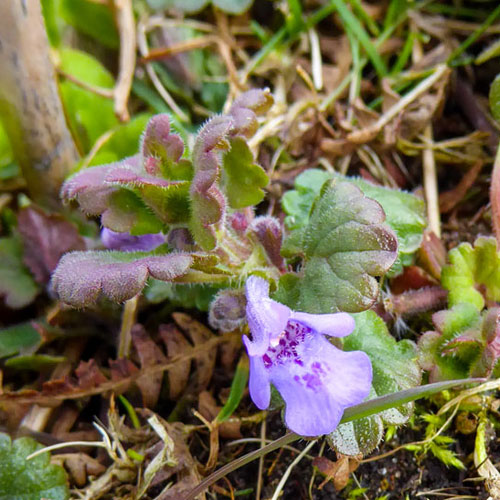 |
| Coltsfoot |
Lesser Celandine |
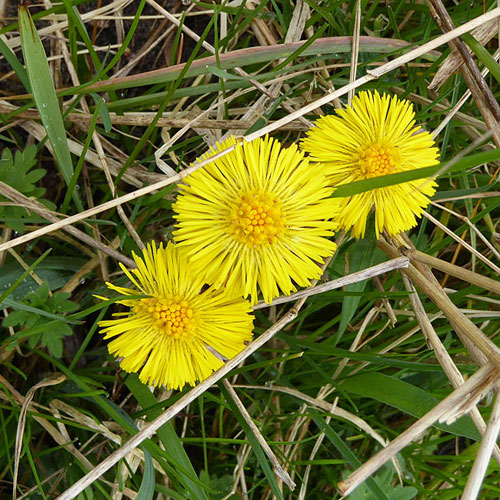 |
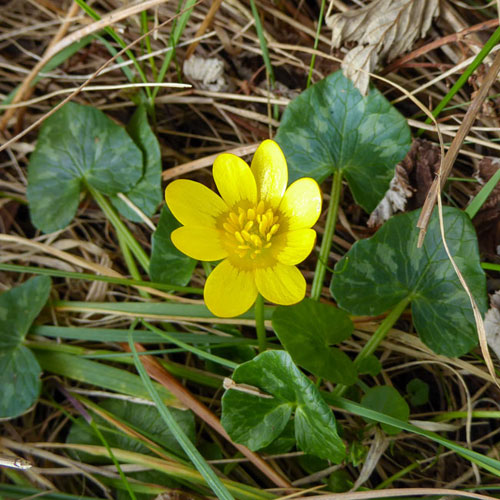 |
We decided to have a we look around the Aberlady LNR. We got off to fine start when John
spotted a Little Egret on the opposite side of the Peffer Burn. I snapped a few shots of the
bird as it took flight, disturbed by walkers on the bridge. John then drew my attention to two Roe
Deer, one that had been close to the Egret and the other that was grazing in tall reeds to the left of
the bridge.
We headed for the Marl Loch and just before we reached the path through the Sea Buckthorns I
managed a shot of a passing Carrion Crow. As we passed through the Buckthorns, we were
delighted to hear the sound of a singing ChiffChaff, newly arrived from its winter home that
may have been as far south as North Africa. A Greylag Goose was preening on the Marl Loch as a
Grey Heron flew past and settled out of sight behind the Buckthorns.
| Carrion Crow |
Chiffchaff |
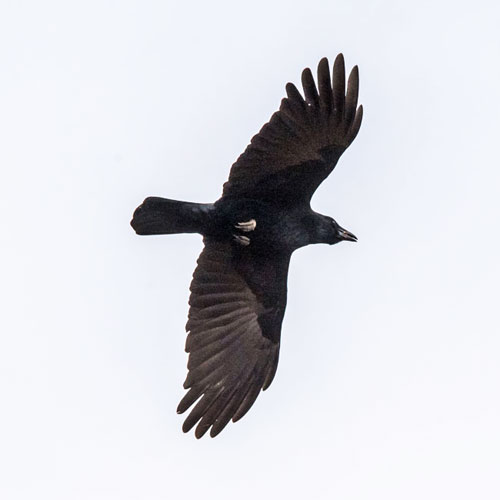 |
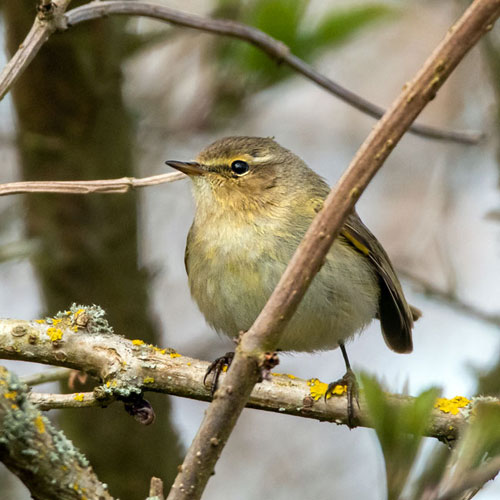 |
| Greylag Goose |
Grey Heron |
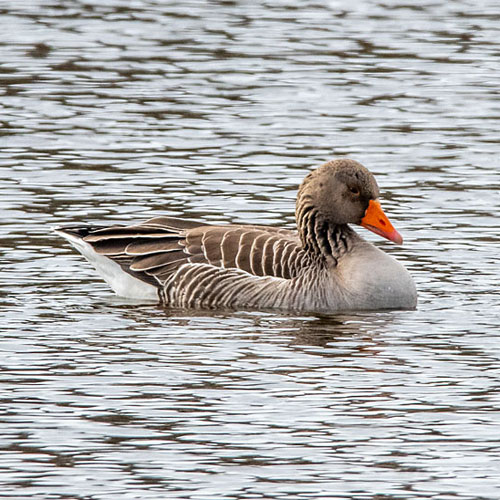 |
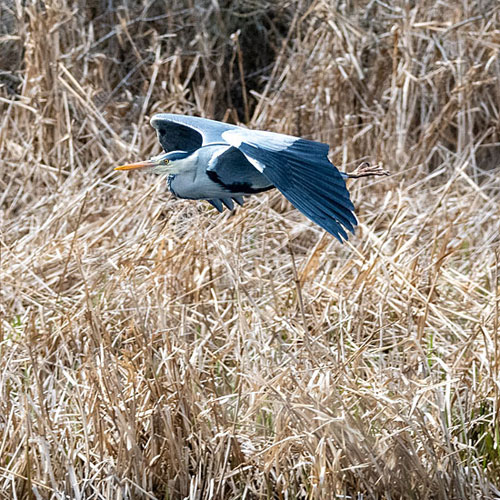 |
The clouds finally broke revealing patches of brilliant blue skies. This may have delighted not just
us but also the Skylarks that were singing incessantly high above the field. I also spotted a
few Skylarks that were lurking in the grasslands around the path and did manage a shot of one
that was watching us from the long grass as we passed along the path. Before we turned back, I
got some decent shots of a large Magpie and his cousin, Carrion Crow, posing on tall post.
Back at the wooden bridge over the Peffer Burn, eagle-eyed John spotted a Sparrowhawk
circling over the pine woods by the bridge. At the other side of the bridge I snapped a pair of
Black-headed Gulls that were standing on the shallow burn and a pair of Mallards feeding
midstream.
Also in the burn was a pair of Redshanks soaking up the sun.
We finished the trip by returning to Port Seton to check if the King Eider had turned up - it hadn’t
(not strictly true as reports on Twitter informed us that evening that it was actually swimming far
offshore beyond the range of our optics). The shot below shows Common Eiders that were on the
rocks, known locally as the Wrecked Craigs, on our second visit to Port Seton.
Amongst the Eiders, a bright Cormorant was drying its wings. My final shot of the trip was of an
impressive Lesser Black-backed Gull flying over the Wrecked Craigs.
| Cormorant |
Lesser Black-backed Gull |
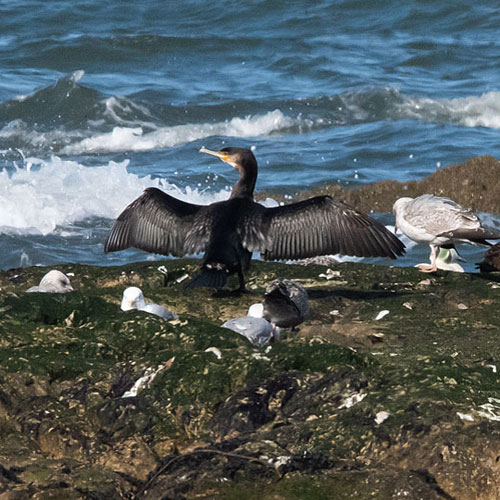 |
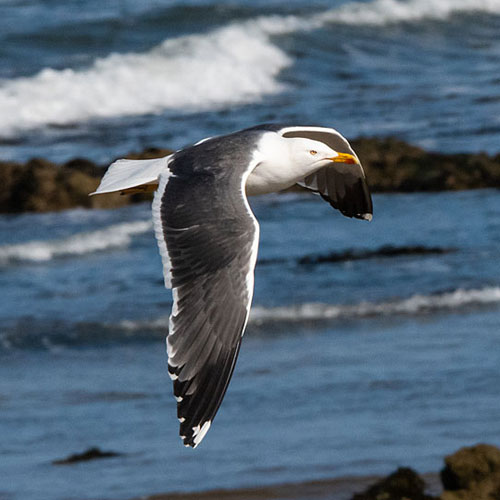 |
Although we were disappointed that we hadn’t seen the King Eider, we did enjoy the visit. We had
seen and photographed our first sightings this year of a Little Egret, Chiffchaff and Sparrowhawk.
We even had tea and strawberry tarts eaten al fresco.
Highlights
We present this month’s gallery of my
favourite pictures I’ve taken during April 2023. They are
not listed in the order they have been taken, but according to a series
of themes. I’ve kept
commentary to a minimum, preferring to let each picture talk for itself.
ON THE BRANCHES I
WINGS
PORTRAIT
INVERTEBRATE
FLOWERS
ON THE BRANCHES II
IN THE PARK
WATER BIRDS
Back To Top
|

